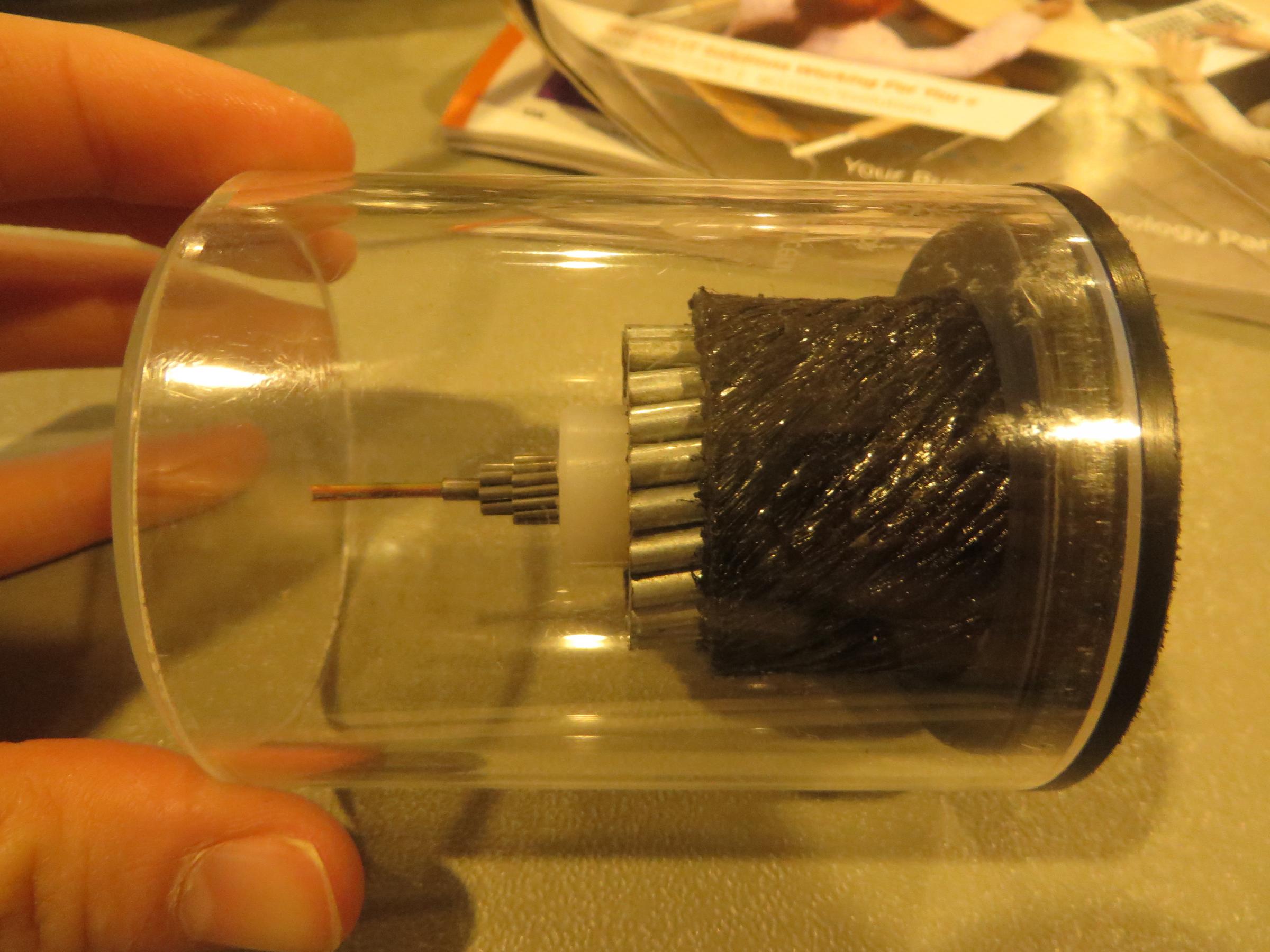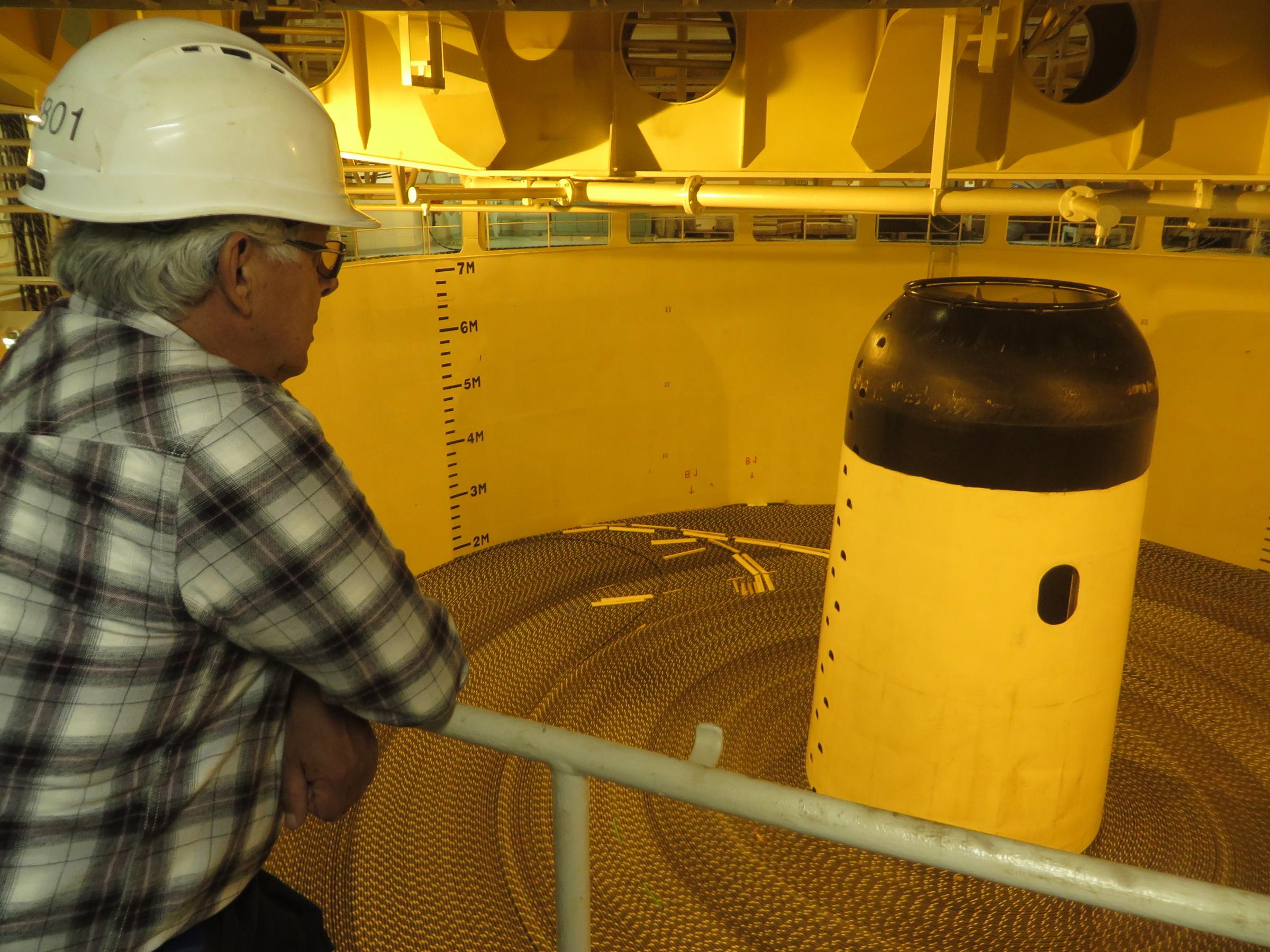Western Alaska just got one step closer to high-speed internet.

That’s because after years of planning and wrangling permits, Quintillion is finally ready to lay fiber optic cable from Prudhoe Bay to Nome. The telecom company has one vessel stationed in the Bering Sea and another close behind.
The Ile de Brehat has left its homeport in France, passed through the Panama Canal, and will soon arrive in Nome. That’s where the vessel will start laying a path of fiber optic cable below the sea floor — a path that will wind more than a thousand miles up to the North Slope.
Right now, though, the ship is docked in Dutch Harbor, and a group of Quintillion’s executives and investors is climbing aboard.
“This is the cable ship Ile de Brehat,” Captain Charles Souffre said. “So first of all, welcome on board, all of you.”
Souffre is in charge of the nearly 500-foot-long vessel and its 70-member crew.
They run the ship on behalf of Alcatel Submarine Networks, the French company Quintillion hired to make and lay the cable system. They’ll start trenching outside of Nome any day now, and the operation will run 24 hours a day through September, relying on a careful configuration of multimillion-dollar equipment.

As Souffre explained to the group, all of that time, money, and manpower really comes down to one thing: protecting thin filaments of glass.
“This is the fiber,” he said. “This one is only for deep water. And this cover is to send power inside the cable to monitor the integrity of the system.”
That’s crucial. The fiber optic system is supposed to last 25 years or longer, supporting a delicate process that allows phone and computer data to ride light waves across the glass fibers of the cable.
It has to work, and it has to be fast. So Souffre said his team will test the cable constantly as they install it by running an electrical current through the entire system and reading the signal from start to finish. If it’s not clear, they stop the ship and fix the problem.
But Souffre said there shouldn’t be too many problems. His crew will lay the cable along a carefully chosen route, developed over two seasons of marine surveys. There are underwater cameras on all the equipment — and cable detectors too, if visibility is poor in murky waters. The whole operation is run from countless monitors and control boards on the ship’s bridge.
“It’s like a big PlayStation,” he said.
But community leaders say that big PlayStation will have an even bigger impact on rural Alaska, where people are still dealing with internet at dial-up speed.
Reggie Joule is a former state legislator and mayor of the Northwest Arctic Borough, and now he’s Kotzebue’s liaison for the Quintillion project.
Looking around the ship at tanks full of fiber optic cable, Joule said high-speed internet is going to be “momentous,” especially for rural economies.
“If we have somebody who can make widgets in one of our communities, but has no outlet — the internet can get the skill of that individual and provide them with a market,” he said. “That changes the economy of places where there aren’t economies, potentially.”
Joule said fast internet will also help rural communities provide better healthcare and education through telemedicine and online learning services.

Unalaska City Manager Dave Martinson agreed.
“Having high-speed internet here will enhance our abilities to do our jobs across the board — whether you’re an educator, a doctor, or a shipping company,” said Martinson.
But Unalaska isn’t getting fiber optic cable. At least, not yet.
Quintillion’s ships will pass through the port, and the company plans to store extra cable on the island in case of emergencies. But for right now, just six communities are getting fiber: Prudhoe Bay, Barrow, Wainwright, Point Hope, Kotzebue, and Nome.
That’s why Martinson made it a point to meet with Quintillion representatives during their visit to Unalaska.
“This was another opportunity to put our plight in front of them — our need for high-speed internet,” he said. “I think that ultimately, it’ll take us a while, but our odds are pretty good.”
Elizabeth Pierce is CEO of Quintillion. She said the company is already thinking about expansion, but she can’t make any promises yet.
“We are working very aggressively to determine what landings we’ll cover in phase two,” said Pierce. “It is our objective to add more Alaska landings, but it’s a little early to make any announcements.”
For now, the Ile de Brehat will start laying cable in Nome and move north. Its sister ship — the Ile de Sein — will begin in Prudhoe Bay and work south until they meet in the middle. The project is on schedule to deliver high-speed internet to western Alaska by early 2017.
Laura Kraegel covers Unalaska and the Aleutian Islands for KUCB . Originally from Chicago, she first came to Alaska to work at KNOM, reporting on Nome and the Bering Strait Region. (laura@kucb.org / 907.581.6700)




